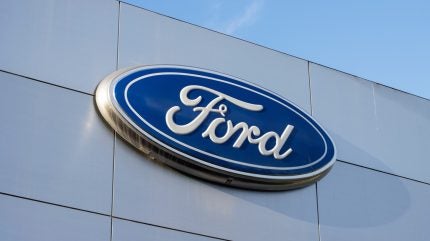
Ford has disclosed its financial outcomes for the second quarter (Q2) of 2025, revealing a net loss of $36m, mainly due to special charges and electric vehicle programme cancellation costs.
For the second quarter, Ford reported total revenue of $50.2 billion, a 5% increase from the second quarter of 2024.

Discover B2B Marketing That Performs
Combine business intelligence and editorial excellence to reach engaged professionals across 36 leading media platforms.
Despite this, the company’s adjusted earnings before interest and taxes (EBIT) stood at $2.14bn (£2.8bn last year Q2), with $0.8bn in adverse tariff-related impacts.
Ford noted that looking ahead, it has adjusted its full-year 2025 outlook, now expecting an adjusted EBIT of $6.5bn to $7.5bn, including about $2bn in net “tariff-related headwinds”, and aims to generate $3.5bn to $4.5bn in adjusted free cash flow.
These projections are a revision from the initial guidance provided in February and the subsequent withdrawal in May due to tariff uncertainties.
The updated guidance mirrors “strong” performance across Ford’s divisions and continued cost improvements.

US Tariffs are shifting - will you react or anticipate?
Don’t let policy changes catch you off guard. Stay proactive with real-time data and expert analysis.
By GlobalDataThe net tariff-related headwind is a result of a $3bn gross adverse EBIT impact, mitigated by $1bn from recovery actions, Ford estimates.
The operational cash flow for the quarter was substantial, at $6.3bn, with an adjusted free cash flow of $2.8bn.
By the end of the quarter, Ford’s cash reserves were $28.4bn, with liquidity at $46.6bn.
The company also announced a Q3 regular dividend of 15 cents per share, set to be paid on 2 September to shareholders on record as of 11 August.
Ford Pro reported $2.3bn in EBIT with a 12.3% margin on $18.8bn in revenue.
Software and services are said to have contributed significantly to Ford Pro’s EBIT, with paid subscriptions growing 24% year-over-year (YoY) to 757,000.
However, Ford’s EV division – Model e – faced challenges, reporting a Q2 EBIT loss of $1.3bn, marking an $179 m increase in losses from the previous year quarter.
The results were affected by net tariff-related expenses, investments in electric vehicles, and costs from the new battery plant launch in Marshall, Michigan, US.
The segment’s doubled revenue to $2.4bn was overshadowed by flat EBIT performance YoY for its first-generation products, the Mustang Mach-E and F-150 Lightning, when excluding tariff impacts.
Ford Blue posted $661m in EBIT, highlighting profitable market share gains and “higher” net pricing, although these were offset by tariff-related issues and a decline in segment revenue by 3% to $25.8bn.
Ford Credit’s performance was significant, with an 88% increase in Q2 earnings before taxes compared to the prior year.
Ford CFO Sherry House said: “We recorded our fourth consecutive quarter of year-over-year cost improvement, excluding the impact of tariffs, building on progress we made last year when we closed roughly $1.5 billion of our competitive cost gap in material cost.
“Our balance sheet keeps getting stronger, further enabling our ability to invest in areas of strength. We are remaking Ford into a higher-growth, higher-margin and more durable business – and allocating capital where we can compete, win and grow.”






